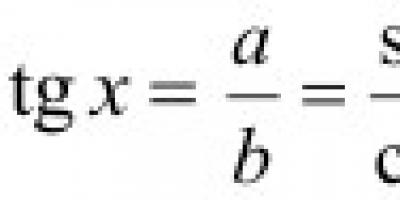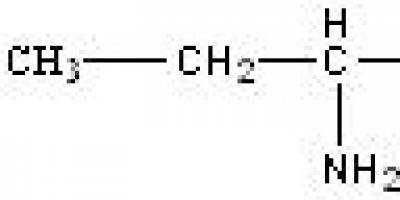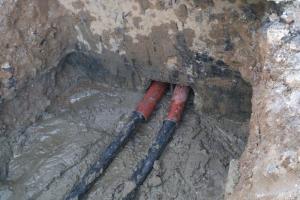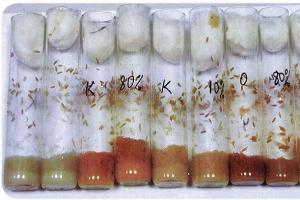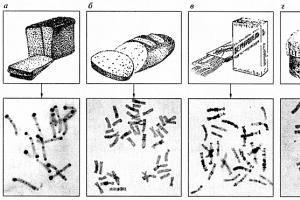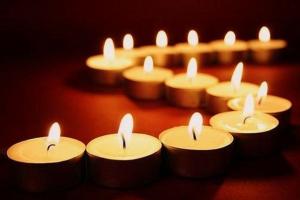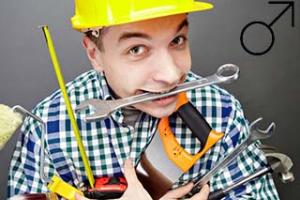The stove is smoking in the house and you don’t know what to do about it? I propose to look one by one at all the reasons that can lead to this result, and consider methods for eliminating them. My accumulated experience allows me to say that any owner can cope with this.
What to do and who is to blame
To determine why the stove smokes when lighting, you should first answer a few general questions:
- What accompanies the smoking process?
- Smoke appeared immediately or after some time?
- How long has the stove been smoking??
Now let's move on to an overview of specific situations:
Situation No. 1: traction overturning
Backdraft can occur due to the stove being idle for several days. During this time, the air currents change direction, and when you ignite the fuel, a plume of smoke will appear right in the house. It is noteworthy that the weather does not affect this in any way; the problem can arise both on warm summer days and cold winter nights.

The stove maker should not be blamed for the reverse draft. This phenomenon is possible in any even ideally constructed furnace structure.
To eliminate the described problem with your own hands, it is enough to increase the air temperature in the chimney. There are three ways to get there:
| Photo | Description of the method |
 |
|
 |
|
 |
|
Situation No. 2: wind
Sometimes strong winds can blow the smoke escaping back into the house. There are two solutions to this problem:
- Increase the height of the pipe along with the head;

- Change the configuration of the visor on the head itself.

Situation No. 3: errors in the furnace masonry
If smoke returns to the room from the very beginning of operation of the stove, then most likely the cross-section of the chimney is too low. This is the stove maker’s fault, and you yourself cannot fix it. You will have to call a furnace technician and hope that the matter will be limited to only repairs and not a complete redevelopment of the structure, since the price of such work is considerable.

Situation #4: wear and tear
If there is no draft in the furnace, then the cause may be banal aging of the heating structure, which results in:
- Ash has accumulated on the inside of the chimney, narrowing its cross-section;

- Cracks appeared in the masonry, leading to depressurization of the pipe.
Instructions for correcting this situation are as follows:
| Photo | Description |
 |
Cleaning inner part chimney At the same time, you should not limit yourself to soot; if we are talking about a brick pipe, then you should immediately remove the fallen masonry elements. |
 |
We seal all the cracks oven mortar, we restore the masonry. |
If you do not have the appropriate skills or your own attempts to correct the situation have not been successful, then you should call a furnace technician. Although this will be more expensive, it will give a guaranteed result.
Situation No. 5: errors in laying a well
Another problem that can arise due to the incompetence of the stove-maker is smoke in the room when the door is open. It is noteworthy that if you close it, the smoke comes out into the chimney as expected.

So why does the stove smoke when the door is opened? This is all due to the fact that the master placed the entrance to the well too low, and it is preferable for the heated air, along with combustion products, to exit through a higher door opening. This can be clearly seen in the following diagram:

This cause of smoke can be dealt with by erecting a wall inside the firebox, the top edge of which will be a couple of tens of millimeters higher than the top edge doorway, as shown in the diagram:

After such an upgrade, the iron door can remain open, air flows with combustion products will still move towards the entrance to the well.
Conclusion
You have learned about the causes of furnace smoke entering the interior of your home and how to eliminate them. The video in this article contains additional information, and you can ask any questions in the comments.

To heat a home or other buildings, a traditional wood-burning stove is often used. It is characterized by low cost, compact size, high efficiency, low cost of use and other positive parameters. Often people are completely engaged in its creation and, since there are no special problems with this.
However, during the operation of the stove, quite often you have to deal with the fact that when you open the door into the firebox, unpleasant and rather strong smoke appears. It can also come from others structural elements stoves. What are the reasons for this situation, what needs to be done to get rid of smoke, as well as what preventive work is recommended to be carried out, so that such problems do not arise in the future? This is discussed in our article.
What should you do if you detect smoke?
If a potbelly stove smokes, then we can definitely say that the draft is broken in the design, which is important stove performance parameter. However, reasons that could contribute to cravings, there can be a huge number. Smoke may appear when lighting the stove or be present all the time, however, in any case, you first need determine the reason malfunction of the potbelly stove, and after that start repair work.
It is important to know that if smoke comes from the stove, then this violation will not only be negative affect people's health living in the house or constantly present in the garage, where installed but can also pose a danger to human life.
The first step when detecting smoke is to check all the channels through which smoke moves, and you should also carefully examine the entire stove body, since it may holes or cracks form, as well as during masonry, significant and difficult-to-fix errors.
How is a potbelly stove chimney checked?
 Despite the fact that when opening the firebox smoke appears, the check must begin with the chimney.
Despite the fact that when opening the firebox smoke appears, the check must begin with the chimney.
After this, you can move on to other structural elements. The entire check can be divided for the following types of work:
- The chimney is inspected for fact the presence of foreign objects in it, which could negatively affect draft, and since smoke cannot normally and easily exit into the street through chimney pipe, then, naturally, it will come into the house. It is often necessary pull out various elements, clogging this part of the stove, this is especially common in chimneys that do not have a protective cap on top.
- Next, it is important to determine whether it is stuck, since it can also bad effect on cravings. This is due to the fact that when the firebox is ignited, smoke appears and cannot escape effectively. through a very narrow hole. As a result, gases escape through various small holes that are present in the stove, and they especially begin to be very noticeable when the door to the stove is opened. Soot build-up can occur from long-term use of the structure. without periodic cleansing, as well as from using inappropriate or cheap and low-quality fuel. Incorrect placement of the chimney can also contribute to its rapid clogging with soot.
Read also: Long burning potbelly stove
What to do if the entire smoke problem is related to the chimney? The only one The solution is to clean the chimney, and this must be done correctly and efficiently.
How to clean a chimney?
 This work can be done in the garage or in the house, depending on where exactly the stove with the clogged chimney is located. In this case it is possible do this work yourself, however, it is important to protect all elements located next to the stove, from soot.
This work can be done in the garage or in the house, depending on where exactly the stove with the clogged chimney is located. In this case it is possible do this work yourself, however, it is important to protect all elements located next to the stove, from soot.
Cleaning may be done using different methods:
- mechanical, involving the use of various tools;
- chemical for which it is necessary to use various chemical compositions;
- pressure, which consists in using special equipment that creates a hard and strong pressure of water, which knocks down all the growths or throws out foreign elements in the pipe.
When constantly implementing this task, a mechanical method is usually used, which consists of using a brush, a cable and a special weight. Initially, a weight on a cable should be lowered into the chimney, which will immediately determine exactly where there is an obstacle. The weight needs to be dropped because it can be used to dislodge a foreign object. Next, the pipe begins to be cleaned using a brush, which can be round or square, but the diameter of the brush should be a little bigger, how chimney pipe diameter.
The appearance of smoke due to incorrectly selected chimney dimensions
Another quite popular one cause of smoke is incorrectly selected, and this error usually occurs during the installation of all equipment. When in a garage or other building, it is important that its outer part, which is located on the street, had the necessary and sufficient height.
If the proportions are chosen incorrectly, then there is often smoke coming from the stove, which comes out when the door is opened, and the reason lies precisely in the chimney. If this error is detected, it is necessary to urgently correct it, for which purpose the structure is built up through the use of additional sections of pipe.
Read also: The most efficient stove
What needs to be done if smoke appears when lighting a potbelly stove?
 It is also very common to be the owner of garages or other small buildings who heat their buildings with wood-burning stoves are faced with the fact that during the cold season during kindling there is heavy smoke in the premises.
It is also very common to be the owner of garages or other small buildings who heat their buildings with wood-burning stoves are faced with the fact that during the cold season during kindling there is heavy smoke in the premises.
The fact is that in a garage or other similar structures, stoves are not used constantly, but with a certain frequency. In winter, a plug of cold air appears in the chimney, which disrupts normal and optimal traction.
To resolve this issue, you can use the following methods:
- a burning candle or torch is brought to the smoke collector, which allows you to eliminate the column of cold air;
- enough is burned near the smoke box a large number of paper.
Due to the methods described above, the chimney warms up well, and cold air comes out, so if you do all the work correctly, you can get rid of smoke from the stove.
What other causes of smoke can be identified?
The reasons described above are the most popular and frequently encountered, however, other situations can be identified in which a large amount of smoke can flow from the firebox into the room. These reasons include:
- low-quality solution used in the process of fastening various elements of the stove or used for interior decoration main structural parts of equipment;
- in brick potbelly stoves, a fairly common problem is considered to be excessive large seams in masonry, through which smoke penetrates into the rooms or garage;
- non-use, it may become deformed during the operation of the stove, as a result of which it will no longer cope with its main tasks, and may also cause the appearance of a crack in the furnace body.
All of the above factors are the cause of smoke while using the oven. It is strictly prohibited to use the equipment in this condition. What to do in such a situation? There is an urgent need to produce high-quality and correct renovation work, and for this the gaps are completely closed with adhesive solutions, and is also replaced or straightens up suitable tools lining.
Despite centralized heating and widespread gasification, heating stoves have not gone out of use modern man. Many people heat their dachas in this way, others have not yet reached progress in the form of a gas pipeline, while others simply like to have a stove in the house, because the living warmth of the hearth has always created a comfortable environment in the house.

It doesn’t matter for what reasons the owner fires the stove the old fashioned way, but if the stove smokes, then this is already a problem and to eliminate it, you must first understand the causes of the smoke.
So, first you need to determine why the stove smokes and at what exact moments the smoke begins to partially or completely escape through the door. What is the weather like outside, cold or warm, windy or quiet, all these factors are of no small importance. Next, you should inspect the chimney for soot fouling, mechanical damage or blockage of the elbow. You also need to inspect the blower. It would not hurt to go up to the roof and inspect the pipe riser for cracks.
Having carried out a thorough inspection of the stove heating system, we can draw a conclusion about the reasons for the decrease in draft and smoke in the room. After all, in order to solve the problem, you must first determine why exactly the stove is smoking, and only then undertake repairs. Below we will consider separately different reasons bad traction and solutions.
External smoke factors

To prevent the stove from smoking, it is necessary that the chimney exits directly from the firebox, without additional channels.
The causes of smoke from the door and ashpit can be absolutely simple. For example, it grew over the roof garden tree, it prevents the free outflow of air, and also reflects gusts of wind into the pipe, which creates reverse draft and, accordingly, smoke exhausts inside. This problem can be solved by simply cutting off the branches and freeing up free space within the radius of the pipe exit.
But it happens that the reason is not at all an external barrier to the free circulation of air flows, and if the stove begins to smoke in windy weather, then perhaps chimney is located much lower than the ridge of the roof, which is why air flows creeping along the roofing sheet again impede free air exchange. In this case, the pipe needs to be extended and the problem will be eliminated.
If the stove smokes when damp and rainy weather, then there may be several reasons. Each chimney is laid out individually depending on the height of the house structure. Some smoke passages are quite long and complexly curved, with several bends and a high riser. Other drainage systems carbon monoxide and smoke are simpler and work almost “directly”. In such cases, a possible cause of poor circulation may be snow and rain entering the pipe, which causes dampness, and the passing smoke quickly cools, condenses and can create an air lock. In this case, a cap or umbrella is mounted above the pipe head. They differ from each other in the degree of pipe coverage. An umbrella is made of tin or metal and rises at a distance, protecting from rain and moisture. And the cap completely covers the chimney and is part brickwork, has side openings for the removal of gases and is mounted mainly for protection from bad weather and strong winds.
Causes of smoke due to burning and cleaning

Breakdown is one of the causes of smoke in the furnace due to a violation of the seal.
Problems with the removal of gases and smoke may have a different nature, independent of weather conditions. It happens that the stove smokes due to poor care and oversight. For example, a ash pit clogged with ash ceases to fulfill its function of providing and controlling draft force, which naturally affects the intensity of the fire and the removal of combustion products. If firewood, coal or peat have a poor supply of oxygen during combustion, then intense formation of smoke occurs, which simply does not find any other way out except all the available cracks. It is known that combustion products are heavier than air, and oxygen aeration directs them outward. If oxygen access is limited, then clouds of smoke will spread and enter the room.
Another reason that the stove smokes can be the fouling of the chimney with soot and fumes, up to the complete blocking of the passage. To eliminate this problem, you need to clean the stove, chimney and all passages. In specialized hardware stores today, chimney cleaning products are available for sale. Using them is extremely simple, just burn the purchased product in the oven and during the combustion process the chemical elements will dry out the greasy soot and fumes, and burn off all the accumulated soot until it completely falls off. But not always similar method cleaning gives a 100% result, and the stove smokes as before.
You can clean the smoke exhaust system the old fashioned way, mechanically. To do this, use various special metal brushes or old, outdated brushes. A metal wire bent at the end is also used to clean the bends of the knees. The pipe itself is cleaned from the roof by lowering plumbs or using brushes.
The most common problems and their solutions

Another simple reason why the stove smokes during lighting may be the formation of an air cushion due to weather conditions, or due to prolonged inactivity. This problem is easy to identify. You need to light a match or a piece of wood in the firebox and see if the smoke goes away. If the smoke spreads or the fire goes out, then perhaps a formation has formed in the pipe. air bag due to a decrease in atmospheric pressure or the occurrence of reverse draft when the temperature in the house is lower than outside. In this case, preheating the chimney will help. To do this, with the ashpit closed and the firebox door open, ordinary newsprint is burned inside. Five minutes of intense burning of light material is enough to break through the air block.
If, despite all efforts to preheat and clean the vent, the stove still smokes, then you need to go up to the roof and inspect the masonry. In most cases, depending on time and exposure environment the plaster crumbles, the integrity of the brickwork is destroyed and cracks are formed through which air exchange occurs and the intensity of draft is disrupted. Moreover, this problem is fraught fire hazard, since streams of smoke from the cracks carry sparks and can create a fire.
This problem can be eliminated by filling the resulting cracks with clay mortar and plastering the outside and, if possible, the inside of the chimney. The solution is prepared with a medium consistency, because too much clay content will cause new cracks when drying, and a solution that is poor in content will simply crumble and crumble.
Brick falling out
If the stove is cleaned, coated, preheated, but still smokes, then there is no need to immediately call a stove technician. You can try to carry out a more detailed inspection and still determine the cause of the smoke. Quite often, the cause may be a banal piece of brick falling out of the masonry. This can create a problem when a brick falls into hard to reach place and it may be necessary to partially disassemble the chimney to get it out.
Often, owners of private houses and bathhouses are faced with a rather serious problem - smoke from the heating furnace.
There are a huge number of reasons for this phenomenon - from violations of the technology of constructing the device to a decrease in smoke draft. Smoke may be temporary or permanent, but in any case requires prompt elimination. First of all, it is necessary to determine the probable reasons why the stove smokes in the house and bathhouse, and choose effective ways their elimination.
If an aged stove smokes, then the main reasons include: overturning of the draft, soot adhesion, a damp chimney, the wrong type of fuel material, the appearance of deformations or wear of the heating equipment.
Rollover traction
If the stove smokes, this may mean that the draft is decreasing or stalling. A similar process occurs as a result long downtime ovens. This changes the direction of movement of air masses, as a result of which the smoke is not removed outside, but remains indoors. If there is no draft in the chimney, the main reason may be mechanical blockage of the channel for removing combustion products.
This phenomenon does not depend on the ambient temperature or the design features of the chimney system.
If there is no good draft in the heating furnace, then the following options are provided to solve this problem:
- Open and warm up the chimney hog in the attic.
- Open the cleaning door to warm up the chimney.
- Place the ignited flammable material in the chimney duct.
Soot adhesion
The most common reason for decreased draft is the accumulation of soot inside the chimney duct, pipe and stove hood. Even a minimum soot thickness of 3 mm can lead to a decrease in heat transfer, deterioration of traction and a fire.
Soot formation is promoted by insufficient thermal insulation of the chimney or combustion coniferous wood. An accessible option for removing blockages is cleaning the chimney system. Activities are carried out as follows:
- A clean rag is wrapped around the free end of a metal rod, which is lowered into the pipe. After this, the walls are thoroughly cleaned of dirt.
- In case of slight soot adhesion, you can use special compounds that are added to the fuel material in the firebox. In this case, combustion is accompanied by the release of compounds that contribute to the destruction of existing contaminants. Most affordable option– coarse rock salt.
Damp chimney
Prolonged downtime of the stove leads to the formation of condensation in the chimney duct and further smoke formation of the heating equipment. To warm up the system, it is enough to open the lower iron flap to clean the surface from soot, and place a lit flammable material inside - sawdust, paper, wood chips or dry alcohol. After thoroughly warming up the chimney pipe and leveling the draft, you can start lighting the stove.
Unsuitable fuel material type
In some cases, smoke occurs due to the wrong choice of fuel, which is not suitable for a particular type of stove.
For example, coal or solid fuel units can easily smoke if dry wood is used for kindling rather than coal or peat briquettes. Unlike wood stove, V similar devices The dimensions of the blower correspond to the dimensions of the combustion compartment, therefore, when using wood fuel, the cooled air masses do not warm up sufficiently and remain in the room along with the smell of smoke and soot.
The problem is solved by shortening the ash compartment or using the appropriate type of fuel.
Presence of deformations in the structure
Another obvious reason for deterioration in draft is the appearance of deformations in the structure of the chimney or stove firebox. Cracks, potholes and crevices become a cold bridge, which leads to a decrease in combustion temperature. Fuel material It burns worse, and the stove begins to smoke.
Independent elimination of such defects is carried out as follows:
- Preparation of a solution for plastering based on clay, sand and asbestos in a ratio of 2:1:0.1, as well as a liquid cement primer.
- Carefully clean the area with deformations to improve the adhesion of the solution to the surface.
- Surface treatment with cement primer.
- Filling and leveling defects with a binder.
- Application finishing plaster on the treated surfaces.
Important! Defects in tiles are filled with a special solution of chalk and a building gypsum base. Elements with serious damage require replacement.
Wear and tear of the structure
The next serious reason why a stove smokes may be wear and tear of the structure as a result of long-term use, negative impacts high temperatures, condensation and soot accumulation.
Violation of integrity can lead to the formation of cracks and holes, which reduce draft in the chimney. Not only the structure of the stove is subject to destructive effects, but also the chimney, the walls of which can be deformed under the influence of unfavorable temperature processes.
To eliminate wear and tear, damaged areas will need to be repaired. To achieve this, the following activities are carried out:
- Preparation of high-quality heat-resistant bricks to restore worn areas.
- Removing damaged elements from masonry. Surface cleaning.
- Preparation of a solution of clay and sand, application to the prepared base.
- Laying new bricks, leveling the surface.
Important! The new layer of masonry mortar should be 1-2 cm thicker than the old one.
Causes of smoke in new heating stoves
What to do if a newly installed stove smokes? Often the cause of smoke is structural inconsistencies, non-compliance with the technology of the masonry process, insufficient ventilation, and the absence of a distribution box.
Incorrect chimney height
The main reason for smoke in new stoves is a miscalculation of the height of the chimney pipe. Heating equipment for a Russian bathhouse and a private house must meet the following parameters:
- The size of the stove pipe opening depending on the type of fuel: 140×140 mm (coal) and 140×270 mm (peat briquettes, firewood).
- The height of the chimney above the roof is 75 cm, the elevation above the ridge is 50 cm. If the ridge is more than 1.5 meters away from the chimney, then the chimney can be of a similar height.
If the height of the chimney is not sufficient to prevent smoke, then you can increase it yourself.
Why does the stove smoke when the door is opened during the lighting process? A similar problem arises when there are serious design miscalculations: incorrect cross-section of the exhaust pipe, low location of the inlet channel, unswept chimney. To eliminate the shortcomings you will need major renovation heating equipment.
Violation of stove and well construction technology
The required clearance of the chimney pipe ensures quick and safe removal of fuel combustion products. The minimum pipe diameter for a house is 15 cm, for a bathhouse – 10 cm. The height of the pipe and its installation location on the roof must correspond to the chosen design of the heating stove.
In addition, the inlet to the first well (in the combustion chamber) must be located no lower than the top of the door, otherwise this may lead to smoke every time the stove is lit. The shortcomings can only be corrected by rebuilding the furnace structure.
When assembling the chimney, you should avoid using elements of different sections, which can be the main cause of smoke in the stove. The best option– round pipe. Rectangular smoke exhaust channels can create unnecessary air vortices and increase soot deposition.
Poor ventilation
Another reason why a new furnace starts to smoke is poor ventilation. As a rule, when arranging a ventilation system forced type, the owners of the building provide exhaust hood only in functional rooms - a sanitary unit, a kitchen or a dressing room. However, a separate smoke channel must also be equipped in rooms where normal movement of air masses is required: in the steam room and washing room.
No distribution box
If there are two heating stoves installed in a building, for which a common smoke exhaust system is provided, then smoke occurs as a result of the absence of a distribution box.
To eliminate this problem, it is enough to make a distribution box with two separate channels or operate the furnaces alternately.
The distribution box is a special brick partition located inside the common chimney.
Checking the draft quality in the chimney pipe
To determine further measures to eliminate smoke from the stove, it is necessary to check the quality of draft in the smoke exhaust system. Verification is carried out in one of the following ways:
- Using an anemometer. High-precision professional device for determining smoke draft.
- Ignition of flammable material. The burning material is brought to the chimney grate - with good draft, the flame is directed upward, with poor draft or its absence, it remains motionless.
- Visual check. If, when lighting the stove, the flame acquires a dark red tint, this indicates a decrease in draft. Good draft provides a light, almost white flame.
- Presence of a strong smell of smoke. If strong odors appear when the firebox is open, this indicates a mechanical blockage of the chimney system.
The full list of reasons why a heating stove starts to smoke is quite long. In each individual situation, it is necessary to take into account: the nature (temporary or permanent) and duration of smoke, temperature regime indoors, weather conditions, design features and equipment service life.
If the technology for arranging and lighting the stove is followed, the likelihood of smoke in the structure is minimal. But if a problem is still detected, then timely diagnosis and troubleshooting will ensure long term operation of heating equipment.
Collapse
Home comfort is an important element of a person’s life, and if he is in danger, one should fight the provocateur. One of them may be smoke coming out of the heating system into the room. In addition to unpleasant sensations, such a situation can cause poisoning of those in a private home. In order to correct the incident, you must first understand what causes the stove to smoke.
Main causes of smoke
If the stove smokes into the house, and not out into the street through a pipe, then this is a good reason to look for breakdowns in the heating system and to carry out timely repair work. There are a huge number of reasons, but eliminating them requires various efforts, tools, and knowledge.
Reduced traction
It happens that smoke starts inside the house the first time the system is started. And then the owners wonder why the new stove, installed in accordance with all the rules and recommendations, smokes. Usually the main reason in this case is the loss or weakening of draft, which plays an important role in the operation of the entire heating structure.
Bringing power above normal
In channel, bell-type and other brick stoves There is a certain power level that should not be exceeded, overheating the system to excessive heat generation capacity.
When you try to boost the power of a brick system, smoke almost always begins in the room, since the structure cannot cope with the smoke escaping into the chimney.

Don't squeeze the maximum out of the stove
Insufficient air flow
For good burning, fire needs oxygen - everyone knows this, but few people understand that for the proper functioning of the stove and its chimney, a sufficient amount of air is also required.
Even in severe frost, you should not tightly close all the doors and windows, but if you still forgot about this and the stove smokes into the house, then you can try to save the situation by opening a window or entrance doors– perhaps the heating system simply began to “suffocate.”

Open the window
Rollover traction
A virtually uncontrollable process is the reverse draft of the heating system. It happens that even a new stove smokes if there is strong windy weather outside. Do not panic if smoke begins to occur for this reason - usually the wind subsides quickly, and operation of the stove can continue as usual. 
Structural violations
Most unpleasant reason The fact that the stove smokes into the house may be due to improper installation, installation or construction. If there are violations in the design, the stove usually does not heat well, often smokes small doses of toxic air, and over time begins to emit large clouds of smoke.
If it turns out that the cause was precisely an incorrectly installed structure, then you will have to redo it heating system, often completely.
In some cases, you can get by with partial relocation, usually with the following structural damage:
- Brick splitting in the firebox
- Small crack in chimney
- Disabling the blower,
- Collapse of solution inside the firebox.
If destruction has begun in the structure, then it is better to completely rebuild it, since partial repairs may not help, and the system will continue to collapse in the future.
Furnace wear
Incorrect operation of the heating system may result from wear and tear of the furnace, due to improper operation or frequent boosting of the furnace power. When the structure wears out, various damage occurs on it, from which smoke often pours out.
It should be understood that too large cracks or breaks can lead to a fire, so if they are detected, repair work must be carried out immediately.

Large cracks
Soot in the chimney
The most common reason is not proper operation chimney and emissions of toxic smoke into the room is poor draft due to a pipeline clogged with soot.

If such a problem occurs, it is very important to promptly clean the chimney from the accumulation of soot; this is done using various devices: a hammer, a brush with a weight or other tools.
For preventive purposes, once a week it is necessary to heat the stove with aspen logs, which, when burned, can release soot along with smoke through the chimney into the street.

Preventing blockages in the chimney
Description of real situations
When the stove smokes, the reasons have been identified and you need to get rid of them urgently, then there is usually no time to call a specialist - you need to solve the problem yourself. Depending on why the stove in the house smokes, it is determined what to do, what repair work to carry out and what is not functioning correctly in the heating system.
- Smoke when kindling;
Often, without even checking the draft, and starting to operate the heating system, the owner gets scared and does not understand why the stove smokes when lighting, because everything seemed to be functioning correctly quite recently, no problems arose, but now smoke is pouring out. Those who know physics will not be frightened by such situations - in order for the smoke to escape into the chimney, and not into the room, active air flows, that is, draft, are needed.
If the air in the fresh air is too cold or dense compared to the air in the house, then there will be no draft, which means the stove will release smoke into the room or not burn at all. Therefore, before heating the heating system, you should check the draft.
In order for the movement of gases along the furnace structure to be possible, the cold draft must have greater strength. To check whether there is draft, in the opening of the firebox or vent, using a candle or match, check overall quality traction. The fire from them should tend to the inside of the stove, when brought to the ash pit or firebox. It is best if their flame goes out - this means the quality of air flow is very high and the stove can be heated.
- Unexpected smoking from a previously properly operating stove;
If the stove in your house smokes for the first time and you don’t know what to do, the draft is good enough, but smoke still comes out into the room, then damage to the structure of the stove may have occurred. When there are cracks and breaks in the masonry, cold air enters and prevents the system from functioning properly. For this reason, a brick stove often smokes, even with good draft. It is necessary to detect damage in the masonry of the structure and repair it so that the destruction of the furnace does not continue. Until the problem areas in the masonry are corrected, you should not light the firebox.
- Smoking when the blower is closed;
Due to the lack of fresh air in the room, the stove may start smoking unexpectedly, and when you try to correct the situation by opening the vent, the smoke begins to pour out even more. The only way to get rid of this problem is to open the window or doors. Additionally, this will reduce fuel consumption.
But it happens that such actions do not help, and the smoking increases with each new firebox. Then the cause is apparently a chimney overgrown with soot - this happens due to low-quality fuel or improper operation. This problem can be solved simply - you need to clean the chimney of soot, and the operation of the firebox will return to normal.
- Smoke at the beginning of operation;
If the stove does not smoke much and stops after warming up, then most likely layers of graphite soot have formed on the walls of the structure. Her appearance is normal process and it is considered normal that in order for the furnace to work properly again, the pipe needs to be cleaned.
- Smoke from an iron stove;
If an iron stove smokes, but stops after it warms up, it is necessary to normalize the process of its operation. To do this, you first need to check the chimney for cleanliness - it may be clogged. If soot is not found inside, you should check the section of the horizontal pipe bend indoors, called the indoor hog, for sagging. For proper operation, it is necessary that the far end (relative to the firebox) of the horizontal elbow be located 6 centimeters higher than the near one. If this feature is not implemented in the chimney, an air lock will occur, blocking the smoke coming out.
- The stove begins to smoke evenly when the combustion door is opened;
If the draft is less than normal, and a lot of air is supplied, then when the firebox door is opened, even an old stove will smoke, with a uniform amount of smoke coming out of it. In this case, it is necessary to reconfigure the furnace operation: open the gate slightly and close the ash pan.
- Plumes of smoke from the firebox when the door is opened;
Each furnace has a certain level of power, when you try to force it, that is, increase it to an unnatural level, heating design will not cope with the amount of smoke produced and will emit it into the room.
In rare cases, it happens that the stove spits out smoke due to the fact that one of the channels is filled with soot and clogged with debris, then you need to clean the entire structure of soot.
- The new stove is smoking;
If a newly constructed stove begins to smoke when the fire door is opened, it means that its design was installed incorrectly and the heating system must be completely rebuilt. Perhaps the system parts were designed incorrectly:
- The chimney cannot function due to improper installation
- The firebox does not emit smoke because the system features were not taken into account
- A chimney that is too narrow cannot cope with the amount of burned fuel required to warm the room.
- The heating system is not properly designed
Sometimes it happens that you can reconstruct the stove and get rid of the smoke escaping into the room; study the entire structure and try to determine which part of it cannot work correctly. If you decide to install a brick oven, then you should not build it yourself, if you have the opportunity and means to call a specialist for this purpose.
- The reconstructed stove smokes;
Typically, such situations arise due to the fact that the branded fireboxes offered for the reconstruction of old-style heating systems are not designed to work with your smoke exhaust system. It happens that the purchased, new firebox is too powerful and the design cannot cope with the amount of waste and smoke flows that the branded firebox produces. In this case, you need to purchase a weaker firebox and reinstall it into the heating system.
- Smoke when other systems are operating (for example, a stove).
This usually happens when another heat-generating device operates through a common chimney with the stove. Most likely, soot became overgrown and the devices stopped functioning normally. If the entire structure was installed recently and the devices are new, then perhaps the system was installed incorrectly and the features of their operation were not taken into account.
Conclusion
The most common reasons for stoves smoking in the house are poor draft and soot-covered structure inside. Moreover, if the system begins to become overgrown with “fluffy” soot, then it needs to be cleaned urgently, as it can catch fire, which is a fire hazard.
If you promptly check the chimney for soot fouling and clean it when blockages are detected, then smoke in the room will rarely occur or will not occur at all. It is also necessary to constantly check the entire structure to determine various damages, cracks, faults and so on - they are also a common cause of smoke.
←Previous article Next article →
